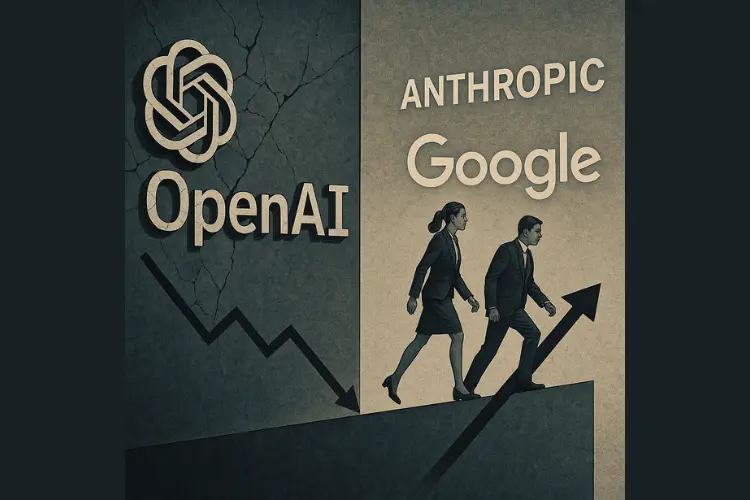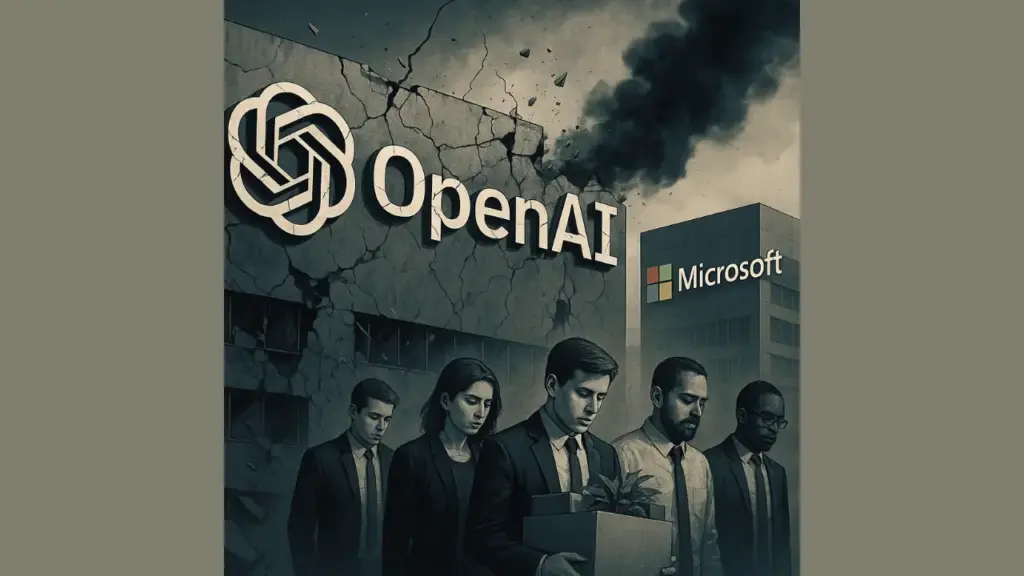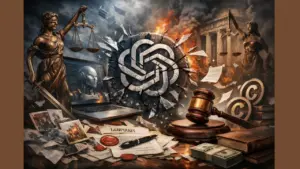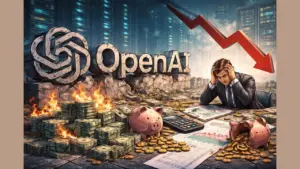Introduction: The Cracks in the AI Crown
OpenAI, the company behind ChatGPT, was once seen as the undisputed leader of the AI revolution. But recent developments suggest the empire may be fracturing from within. From sudden leadership departures to failed acquisitions and strained partnerships, OpenAI is showing signs of instability.
This isn’t just a bump in the road—it may be a turning point. Microsoft has backed away from key negotiations. Major talent is fleeing. A multi-billion-dollar acquisition collapsed. And competitors are closing in.
Let’s explore what’s really happening inside OpenAI and why the AI world is watching closely.
1. The Exodus: When Top Talent Walks Out
OpenAI has recently seen a wave of high-level exits that has shaken its core. These aren’t just routine resignations. They include some of the most influential minds behind the company’s groundbreaking technology.
Notable departures include:
- Mira Murati, Chief Technology Officer
- Bob McGrew, Chief Research Officer
- Barret Zoph, VP of Research
These leaders helped shape OpenAI’s vision and built the architecture that powered models like GPT-4. When people of this caliber leave at once, it signals more than better job offers. It hints at fundamental problems within the company.
Leadership exits can lead to a knowledge vacuum—a dangerous gap in understanding and continuity that’s hard to fill. As any experienced fractional CTO knows, losing key engineers and researchers disrupts workflows, damages morale, and slows innovation.
Worse, reports say only one person remains from OpenAI’s original leadership team photo. That’s not natural attrition. That’s a red flag.
2. Microsoft & OpenAI: From Power Couple to Cold War
OpenAI’s partnership with Microsoft was once seen as a match made in tech heaven. Microsoft invested billions, integrated OpenAI into Azure, and promoted tools like Copilot. But the relationship is now under serious strain.
The core issue? Intellectual property.
Microsoft believed it had access to key OpenAI technologies, especially after contributing heavily to R&D. But OpenAI has allegedly denied access to some of those technologies. This became clear during the attempted acquisition of Windsurf—a startup working on AI coding tools.
When Microsoft asked for access to Windsurf’s IP as part of the partnership, OpenAI reportedly refused. That refusal broke trust. According to insiders, Microsoft has paused all ongoing negotiations with OpenAI.
In corporate terms, that’s massive. Microsoft rarely freezes partnerships unless the relationship is at risk of collapsing. Trust, once broken, is hard to repair.
3. Windsurf Wipeout: The $3B Deal That Exploded
The Windsurf acquisition was supposed to be a milestone for OpenAI. Valued at over $3 billion, it would’ve added powerful AI code assistance tools to OpenAI’s growing portfolio.
But the deal didn’t go through.
Due to unresolved IP conflicts with Microsoft, OpenAI couldn’t finalize the acquisition. This left Windsurf employees hanging, many of whom had anticipated lucrative equity payouts. The failure sent shockwaves across Silicon Valley.
Even more damaging, Windsurf CEO Varun Mohan and much of his team joined Google DeepMind instead. Not only did OpenAI lose the acquisition—it handed its competitor a strategic advantage.
This debacle exposed OpenAI’s struggles in managing partnerships and negotiating transparently. When startup founders and investors see deals fall apart like this, confidence in OpenAI’s leadership erodes.
4. What’s Causing the Collapse? Internal Struggles Revealed
So what’s going wrong at OpenAI?
Insiders point to confused leadership, conflicting priorities, and a growing disconnect between engineering and executive teams. The company expanded rapidly in 2023, hiring aggressively and launching multiple projects. But scale without coordination leads to chaos.
OpenAI’s organizational structure has become top-heavy, with unclear reporting lines and overlapping roles. Many senior engineers reportedly feel unheard or overruled by business leaders with limited technical insight.
A good fractional CTO could have helped bridge the gap between vision and execution. But OpenAI’s internal systems seem rigid, with little room for decentralized leadership or flexible innovation.
Worse, decisions like denying Microsoft access to IP that it helped fund raise ethical and legal questions. Is OpenAI losing its moral compass? Has it forgotten its original mission of safe, open AI?
These are the questions circulating inside boardrooms and Discord chats across the tech world.
5. The Bigger Picture: Are Competitors Catching Up?
While OpenAI struggles, competitors are rising.
Google DeepMind is on a roll, having recently acquired top Windsurf talent. Anthropic is gaining ground with its Claude models, backed by Amazon and other big names. Mistral and Cohere are also carving out their space in niche AI applications.
OpenAI once had a head start of years. But it’s quickly losing that edge. Talent is moving to other labs. Innovation is spreading. And the brand halo that came with ChatGPT is starting to dim.
In fact, some developers and businesses are now choosing alternative models that offer more transparency, better API pricing, or decentralized control.
For investors and partners, this raises a serious question: is OpenAI still the best bet in the AI race?

Conclusion: Can OpenAI Survive Its Own Success?
OpenAI isn’t dead—but it’s hurting.
The exodus of top talent has shaken its foundation. The partnership with Microsoft is in jeopardy. And the failed Windsurf deal exposed deep flaws in how the company handles both strategy and relationships.
What was once seen as a visionary lab is now grappling with internal conflict and external pressure. Competitors are circling. Trust is eroding. And the clock is ticking.
Can OpenAI recover?
That depends on whether its leadership can:
- Rebuild internal trust
- Re-align with original values
- Manage partnerships more ethically
- Retain and attract top-tier talent
If it can do that, it still has the resources to lead the AI space. If not, it may go the way of other tech giants who rose fast but fell faster.
In today’s tech landscape, no company is too big to fail. Not even OpenAI.
StartupHakk will continue monitoring this story and reporting the truth behind the headlines—because the future of AI deserves transparency.




